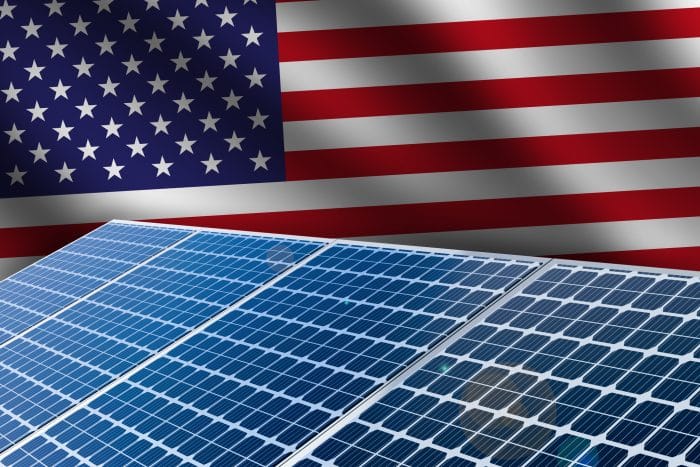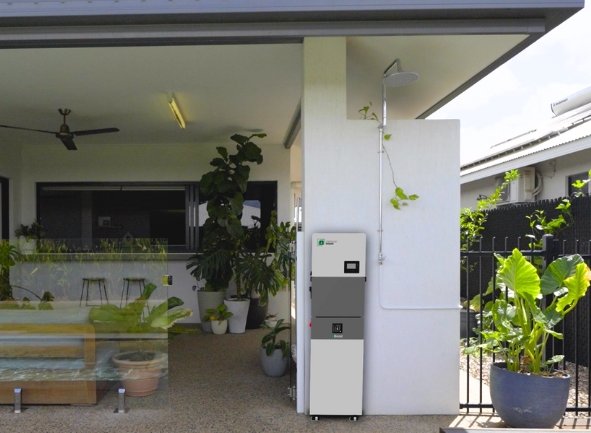U.S. inks historic energy deal with Seneca Environmental

The Biden-Harris administration has selected Seneca Environmental for the U.S. government’s first-ever purchase of carbon pollution-free electricity (CFE) from a tribal majority-owned business.
The historic deal is part the Indian Energy Purchase Preference (IEPP) provisions of the Energy Policy Act of 2005, whereby the U.S. General Services Administration (GSA) will purchase energy attribute certificates (EACs) from Seneca Environmental, which is the energy solutions division of Seneca Holdings, the wholly owned investment arm of the Seneca Nation, based in Salamanca, New York.
The purchase will enable 185 buildings across 12 states to use 100% renewable electricity, delivering on President Joe Biden’s commitment to include tribal enterprises in the renewable energy economy and making progress toward his goal of powering all federal operations with carbon pollution-free energy by 2030.
“Seneca Environmental is building our capacity to participate in power markets and serve customers that value authentic business relationships with tribally owned enterprises,” said Jeffrey Ellis, CEO of Seneca Holdings. “This government contract provided us the opportunity to combine Seneca Environmental’s growing capabilities in the renewable energy sector with our organization’s already deep expertise doing business with the federal government.”
The total electricity load for these buildings is 349,108 MWh. Representing a savings of nearly $800,000 compared to the average price that GSA paid for CFE EACs last year, this procurement is evidence that tribally owned businesses can be price-competitive with corporations in the private sector.
“This historic award represents a real breakthrough by demonstrating that the government can buy affordable carbon-free electricity in ways that strengthen Tribal nations and provide great value for taxpayers,” said GSA administrator Robin Carnahan. “Dispelling the myth that buying from Tribal enterprises would come at a premium, this award shows that a clean energy future is all the brighter with partnerships in Indian Country, and demonstrates our commitment to building a clean energy economy that works for everyone. We look forward to building on this progress to power all federal operations with 100% carbon-free electricity by 2030.”
Established by the Energy Policy Act of 2005, the IEPP allows agencies to give preference to tribes when buying energy products or byproducts. The federal government had made no use of the IEPP, however, before this agreement with Seneca Environmental.
After assuming office, Biden reestablished the White House Council on Native American Affairs and directed it to work with Federal agencies to implement the IEPP. As part of this effort, GSA collaborated with the Department of Energy on a pilot program to increase federal agencies’ use of tribal energy through their purchasing authorities. This procurement is a result of that work and provides a model for future procurements from tribal-owned energy producing businesses.
“For 20 years the Indian Energy Preference was dormant due to government red tape and bureaucracy. This announcement sets up a new partnership model between Tribal energy businesses and the federal government in achieving our country’s clean energy goals and solving the climate crisis,” said Wahleah Johns, director of the Office of Indian Energy at the Department of Energy. “I look forward to seeing the Preference used more and Tribes leading the way in clean energy development. And I applaud the interagency collaboration with GSA, DOE’s Federal Energy Management Program, DoD and the White House Council on Native American Affairs that made this possible.”
“A truly exceptional collaboration between DOE and our government partners, this procurement demonstrates the significant impact we can achieve together,” said Mary Sotos, Federal Energy Management Program director. “This represents a meaningful marker in the successful implementation of the IEPP and is a testament to our collective efforts toward a sustainable and inclusive energy future.”
GSA will continue to work with the White House, White House Council on Native American Affairs, the Department of Defense and DOE to explore potential opportunities to support tribal energy production through federal agencies’ activities. GSA’s market research and solicitation lessons learned will be shared with DOE’s Department of Indian Energy Working Group, with the intent to expand opportunities across other agencies. This pilot is one of many new CFE procurements being implemented by GSA.
“This is a very exciting moment, when a policy provision that has been waiting to be implemented for almost 20 years is finally becoming a reality,” said Julie Ramey, GSA tribal liaison in the office of the administrator. “As part of this Administration’s renewed focus on Native policies and programs, GSA was empowered to take on the complexities of implementing this provision. This is a historic milestone that we hope will inspire even more progress across the federal community, including with our partners such as DOE and DoD, to create further opportunities for Tribally-owned businesses.”
With more than 300,000 buildings and 600,000 vehicles, the U.S. Government is the nation’s largest energy consumer. In December 2021, Biden issued the Federal Sustainability Plan, which directed the government to achieve net-zero emissions by 2050 by transitioning to zero-emission vehicles, energy efficient buildings, and carbon pollution-free electricity. In particular, the plan directs the government to transition to 100% CFE by 2030, at least half of which will be locally supplied clean energy to meet 24/7 hourly-matched demand. Including this procurement, GSA has procured over 700,000 MWh of CFE since 2022. That increase in annual CFE from this IEPP purchase will help accomplish GSA’s goal of 62% CFE in Fiscal Year 2024 for GSA facilities as part of its long-term strategy to reach 100% CFE by Fiscal Year 2030.





Comments are closed here.